
Manuel I, known as the Fortunate, was King of Portugal from 1495 to 1521. A member of the House of Aviz, Manuel was Duke of Beja and Viseu prior to succeeding his cousin, John II of Portugal, as monarch. Manuel ruled over a period of intensive expansion of the Portuguese Empire owing to the numerous Portuguese discoveries made during his reign. His sponsorship of Vasco da Gama led to the Portuguese discovery of the sea route to India in 1498, resulting in the creation of the Portuguese India Armadas, which guaranteed Portugal's monopoly on the spice trade. Manuel began the Portuguese colonization of the Americas and Portuguese India, and oversaw the establishment of a vast trade empire across Africa and Asia.
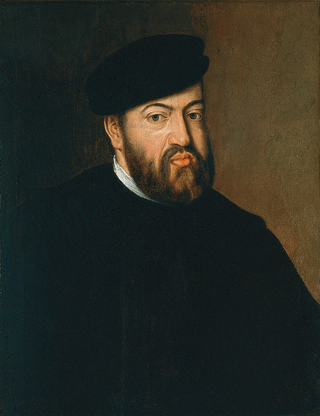
John III, nicknamed The Pious, was the King of Portugal and the Algarves from 1521 until his death in 1557. He was the son of King Manuel I and Maria of Aragon, the third daughter of King Ferdinand II of Aragon and Queen Isabella I of Castile. John succeeded his father in 1521 at the age of nineteen.

John II, called the Perfect Prince, was King of Portugal from 1481 until his death in 1495, and also for a brief time in 1477. He is known for re-establishing the power of the Portuguese monarchy, reinvigorating the Portuguese economy, and renewing his country's exploration of Africa and Asia.

John I was King of Castile and León from 1379 until 1390. He was the son of Henry II and of his wife Juana Manuel of Castile.

John I, also called John of Aviz, was King of Portugal from 1385 until his death in 1433. He is recognized chiefly for his role in Portugal's victory in a succession war with Castile, preserving his country's independence and establishing the Aviz dynasty on the Portuguese throne. His long reign of 48 years, the most extensive of all Portuguese monarchs, saw the beginning of Portugal's overseas expansion. John's well-remembered reign in his country earned him the epithet of Fond Memory ; he was also referred to as "the Good", sometimes "the Great", and more rarely, especially in Spain, as "the Bastard" (Bastardo).
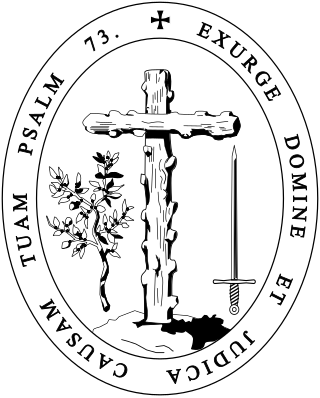
Grand Inquisitor was the highest-ranked official of the Inquisition. The title usually refers to the inquisitor of the Spanish Inquisition, in charge of appeals and cases of aristocratic importance, even after the reunification of the inquisitions. Secretaries-general of the Roman Inquisition were often styled as Grand Inquisitor but the role and functions were different.

Sebastian was King of Portugal from 11 June 1557 to 4 August 1578 and the penultimate Portuguese monarch of the House of Aviz.

The House of Aviz, also known as the Joanine Dynasty, was a dynasty of Portuguese origin which flourished during the Renaissance and the period of the Portuguese discoveries, when Portugal expanded its power globally.
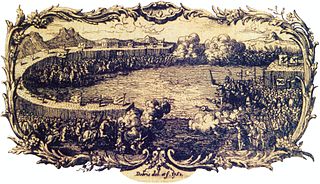
The Battle of Alcácer Quibir was fought in northern Morocco, near the town of Ksar-el-Kebir and Larache, on 4 August 1578.
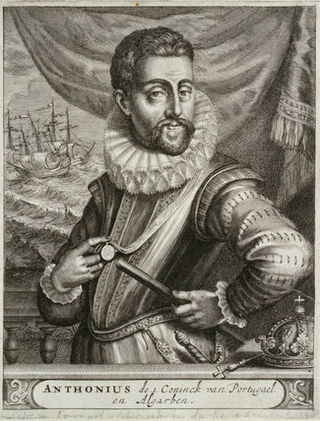
António, Prior of Crato, sometimes called "The Determined", "The Fighter", "The Independentist" or "The Resistant", was a grandson of King Manuel I of Portugal who claimed the Portuguese throne during the 1580 dynastic crisis. According to some historians, he was King of Portugal for 33 days in 1580. Philip II of Spain prevailed in the succession struggle, but António claimed the throne until 1583. He was a disciple of Bartholomew of Braga.

Catherine of Austria was Queen of Portugal as wife of King John III, and regent during the minority of her grandson, King Sebastian, from 1557 until 1562.
The Portuguese succession crisis of 1580 emerged as a result of the deaths of young King Sebastian I of Portugal in the Battle of Alcácer Quibir in 1578 and his successor and great-uncle Henry I in 1580. As Sebastian and Henry lacked immediate heirs, a dynastic crisis unfolded, marked by internal conflicts and external contenders vying for the Portuguese throne. Ultimately, Philip II of Spain succeeded Henry I as King of Portugal, uniting the Portuguese and Spanish Crowns in the Iberian Union. This personal union endured for 60 years, during which the Portuguese Empire faced decline and global challenges, notably the Dutch–Portuguese War.
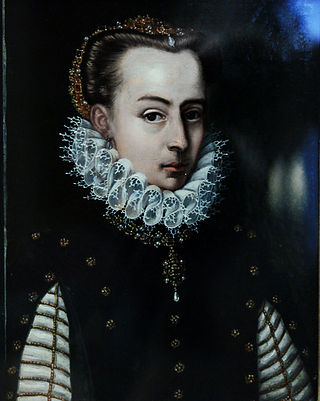
Infanta Catherine of Portugal, Duchess of Braganza by marriage was a Portuguese infanta (princess) claimant to the throne during the Portuguese succession crisis of 1580.
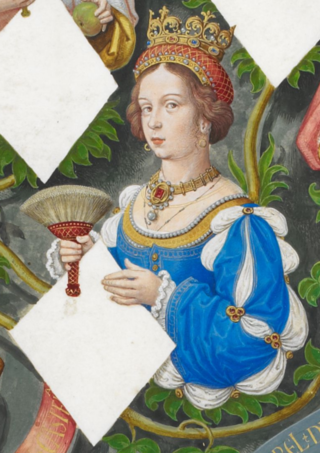
Joan of Portugal was the Queen of Castile as the second wife of King Henry IV of Castile. The posthumous daughter of King Edward of Portugal and Eleanor of Aragon, she was born in the Quinta do Monte Olivete Villa, Almada.

Infante Luís of Portugal, Duke of Beja was the second son of King Manuel I of Portugal and his second wife, Maria of Aragon. He participated in the Conquest of Tunis.

Cardinal-Infante Afonso was a Portuguese infante (prince), son of King Manuel I of Portugal and his wife Maria of Aragon.

Duarte, Duke of Guimarães was a Portuguese infante (prince); the sixth son of King Manuel I of Portugal and his wife Maria of Aragon.
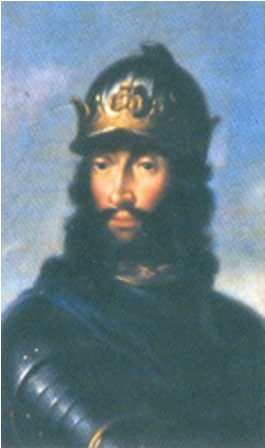
Dom João I of Braganza was the 6th Duke of Braganza and 1st Duke of Barcelos, among other titles. He is known for pushing the claims of his wife, Infanta Catherine of Guimarães, to the throne of Portugal.

The War of the Portuguese Succession, a result of the extinction of the Portuguese royal line after the Battle of Alcácer Quibir and the ensuing Portuguese succession crisis of 1580, was fought from 1580 to 1583 between the two main claimants to the Portuguese throne: António, Prior of Crato, proclaimed in several towns as King of Portugal, and his first cousin Philip II of Spain, who eventually succeeded in claiming the crown, reigning as Philip I of Portugal.
In the Medieval Kingdom of Portugal, the Cortes was an assembly of representatives of the estates of the realm – the nobility, clergy and bourgeoisie. It was called and dismissed by the King of Portugal at will, at a place of his choosing. Cortes which brought all three estates together are sometimes distinguished as Cortes-Gerais, in contrast to smaller assemblies which brought only one or two estates, to negotiate a specific point relevant only to them.




















